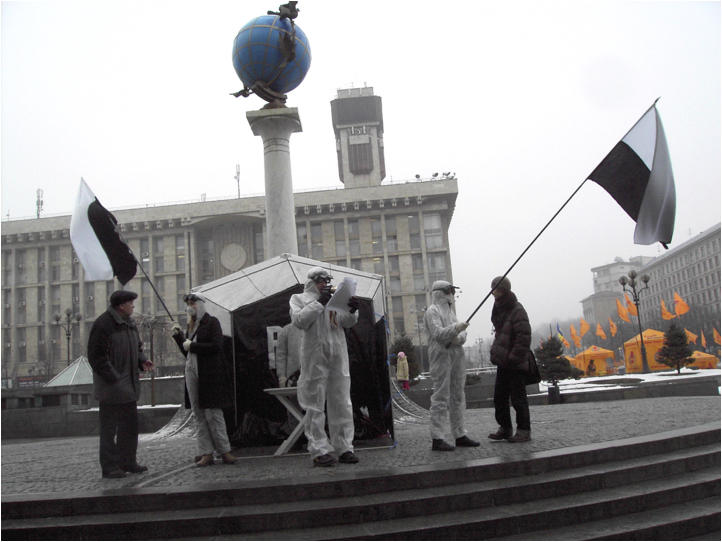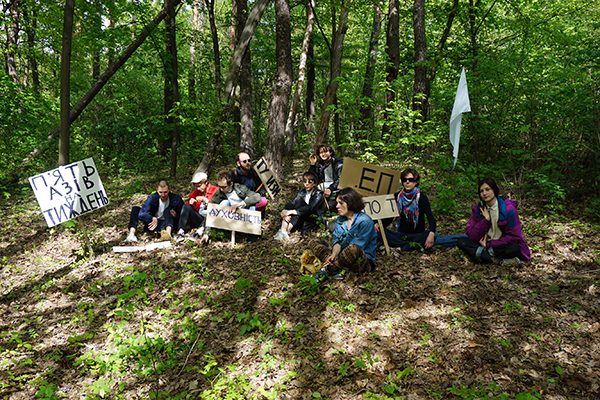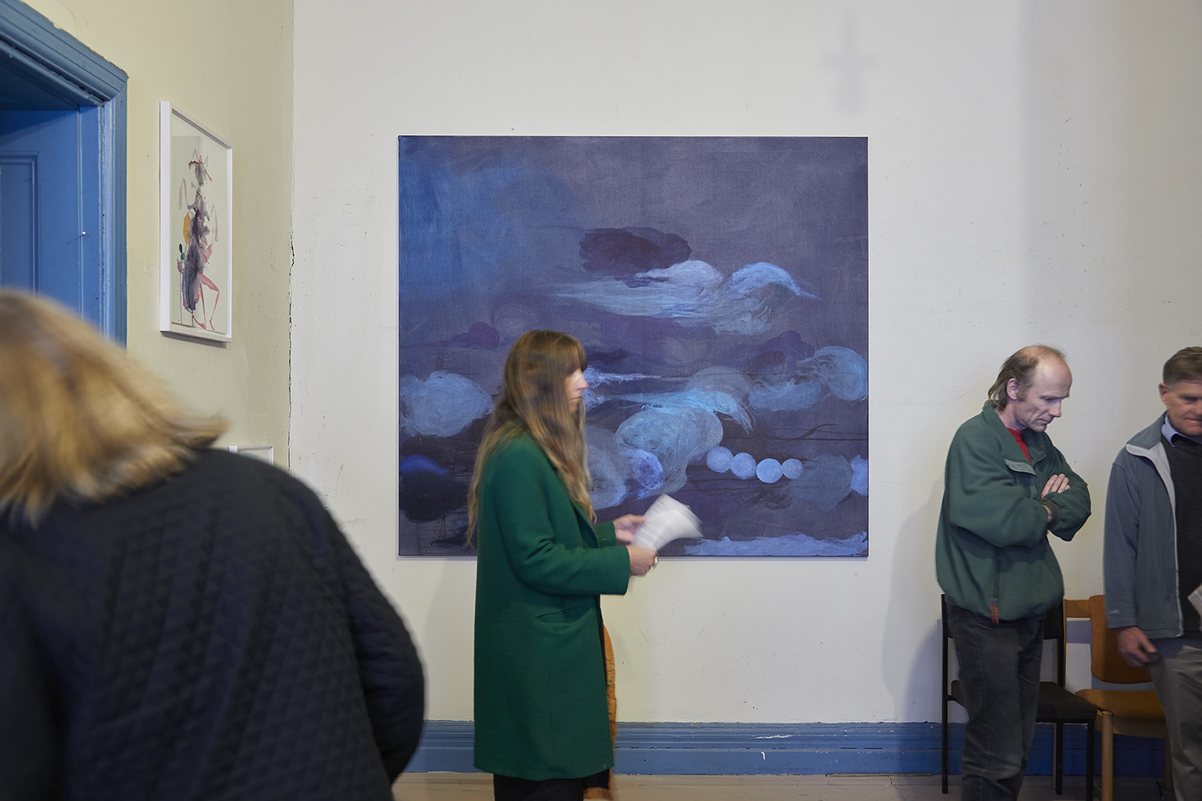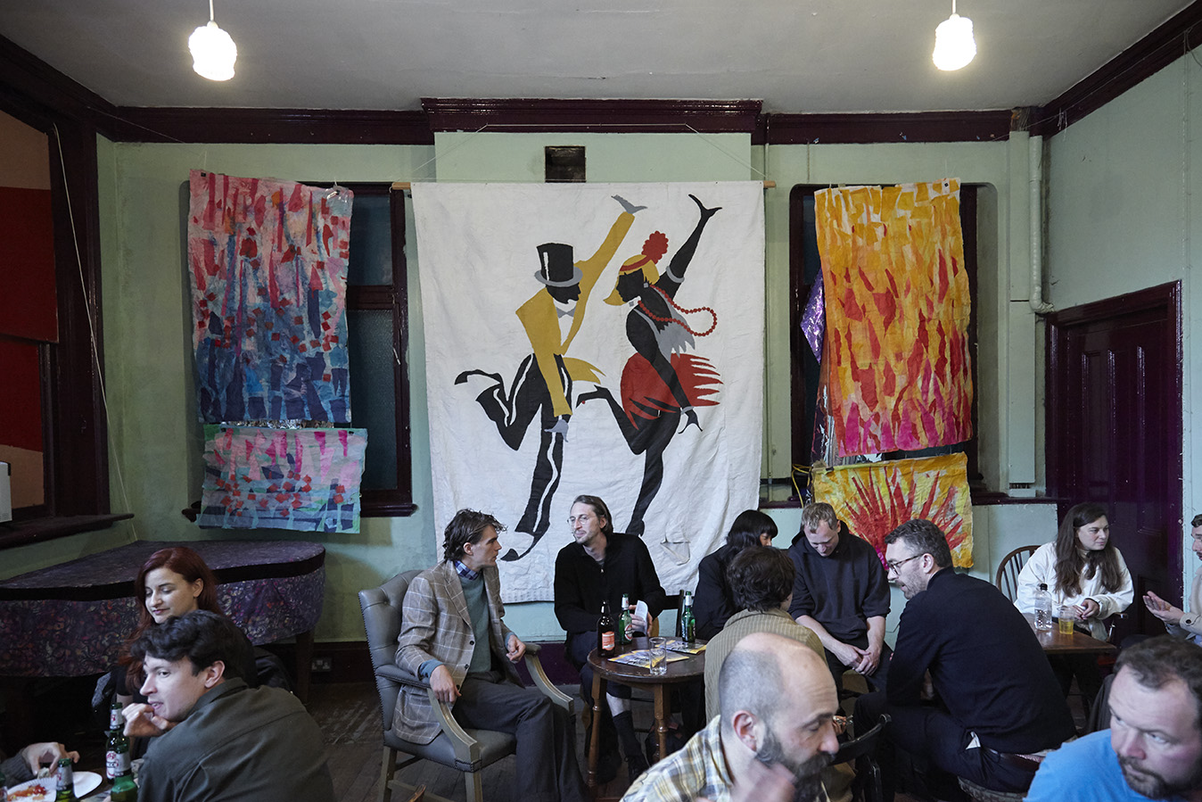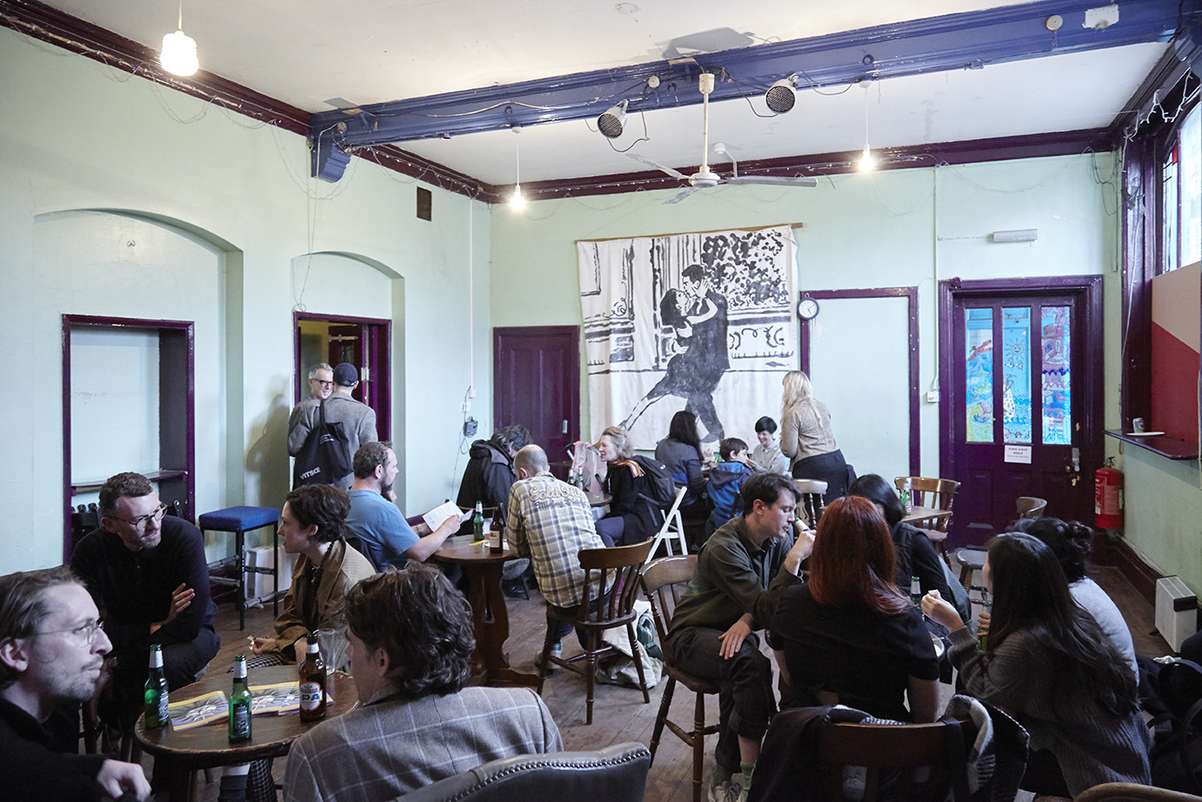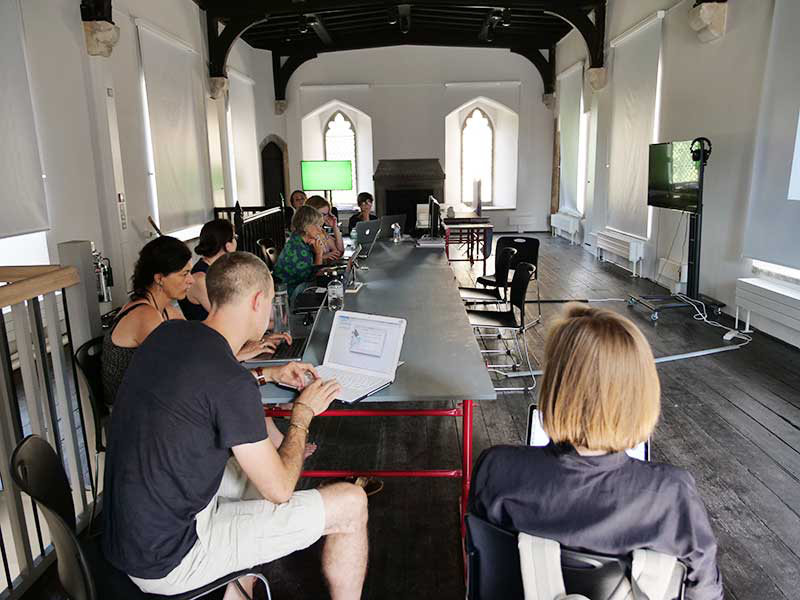2. What is going on in the art school?
As artists and educators based in a university context we have had many discussions about the role of the art school and the university and the way we should shape or develop our activities. We observe the neoliberal education project and students who see themselves as consumers rather than active, responsible bodies, taking ownership of their education. Many of us are engaged in collaborative and curatorial work, setting up groups and spaces or publishing platforms alongside our educational work, and this narrative has often shaped our understanding of teaching as an interface. We have been looking for what new and emancipatory teaching and self-empowering learning might look like for artists in the university context.[11] As part of this exploration, we have sought to find new ways in which the university could be imagined as a public arena, a place which opens its life beyond the academic community.
As the so-called educational turn has become more pronounced, we have seen numerous self-organised art schools, free talks and workshop programmes spring up in the UK and around the world. The reasons for these are complex but in the UK they can certainly be attributed to escalating student fees, overall cuts to arts funding and university budgets, or the neoliberalisation of education itself. What is obvious from this trend is that many are looking for an art school to be more self-determined, flexible, small-scale and site-specific, and responsive to the local context.
Thierry de Duve outlined the development of Western art education via three historical models beginning with the Academy that focused on original talent, where learning was passed on from the Master artists to the teaching of a Métier, centred on the understanding of how genius, technique and imitation are constructed and developed, followed by the avant-garde schools, such as the Bauhaus, who focused on the nurturing of creativity and invention whereby the individual is located in the centre of the project, to arrive at the contemporary art school, which aims to develop a critical approach to artistic practice, with a sense of deconstruction, towards the formation of an ‘attitude’, a post- modern concept, whereby the student can choose to appropriate or denounce any of the historical skills previously offered in favour of understanding the social attributes necessary to become an artist.[12] Luis Camnitzer has pointed out that the art system still differentiates between those who make art and those who appreciate it. Those who make ‘the art’ are subject to the criteria of meritocracy, and the educational system aims to select and distil those who rise to the top.[13] The work of those few is meant to attract as many viewers as possible to sustain the market. As a consequence, the role of the art school is thus to produce both those who can feed into the market and those whom they develop as support industry, mediators, researchers and curators, whereas the developments in curriculum still do not provide a clear answer to this, given that the percentage of those arriving in the elite ‘bright’ spheres of the art market is and will of course remain slim. This means that therefore most art school teaching will educate for those in the majority of artists on the ‘dark’ side. And of course the different sides interfere with and influence each other. Ostensibly it is also clear as Boris Groys points out that ‘artworks are not just commodities, but also statements made in the public space, where the majority of people see them not as buyers but as consumers of meaning’. In his article on Art Schools Boris Groys argues for an ‘education by infection’. He examines the challenges faced by art school educators teaching in a post-modernist space without tradition, where market strategies dominate and where professionalisms and notions of sincerity are conceptually rejected, where ‘things taught in art schools will immediately and automatically be perceived by students as obsolete as remnants of the past’.[14] Where students are looking for something else. Groys argues for a post-modern condition of art education whereby ‘just as art after Duchamp can be anything, so art education can be anything’[15]. He uses a metaphor from the biological sciences to describes the education of artists as a system of infection, building on Malevich’s ideas of ‘biological evolution’ of education, and the art school as a space of ‘viral incubation’[16], whereby in the enclosed confines of the school students and teacher infect each other and at the same time enter an infectious relationship with the world.
Reading International is an art organisation that is located both in the university and in a regional environment, it seems obvious and relevant that we should therefore seek to operate our art school with Camnitzer as an ‘open system, focused on improving communal creativity and communication’[17] and at the same try to develop a sense of cross-pollination or ‘infection’ with the outside world. We might argue for an art school that is site-specific, in that it enters into dialogue not only with the wider realms of art and society, but also with its closest environment, the local town community. We have developed a network of partner organisations, both local and international, who have entered a space of mutual support, acting as hosts to the projects developed by us with our partners in mind. This is both a conceptual and practical framework, because the university does not have a gallery and in actual fact has very limited ‘free space’ for exhibitions of public events. This was a negative situation at the beginning, but has helped to build bridges and partnerships with the outside world, as the later section of this text will show. The process of setting up an arts organisation for the benefit of students, artists and community has opened up new questions about the results of this process and how can we successfully develop new ways of working together from within the university.
Nora Sternfelde has asked how one could negotiate a change of the system from inside the educational institution, and what we could learn from the seemingly inevitable failure of it. “’How can one negotiate from “inside” institutions with respect to changing them or changing one’s own position or that of society? And what role can failure, an inevitable component, play in this?’[18] Sternfelde cites Bertold Brecht and Paolo Freire, who like others were aware of the relationship between education and political ideology and who claimed that educational projects should always take up position and negotiate this position strategically both from the inside and from the outside of the institution or system.[19] The question of how and where to locate oneself, inside or outside or in the liminal space between is ongoing. How can we teach artists to engage with each other, to be infected by each other, and to learn to act and re-act with a wider public? How to make sure that learning is about connecting with others, about holding responsibility for others, and that art practice is not necessarily always or inevitably about oneself?
Irit Rogoff reminds us that the many discussions we have had in the universities were not simply about increasing quantity and quality of the educational remit, but also about the possibility of the reach of the institution itself. ‘When we say that these institutions of ours could be so much more than they are, we don’t imply that they should be larger, or more efficient, or more progressive, or more fun (though they certainly should be more fun). Instead, we wish to say that their reach could be wider, that they might provide sites for doing so’. [20]
By starting a public programme of exhibitions, events and talks designed to connect the art school with the wider arts community, we have asked the question of what a site or organisation within the art school designed to increase our reach could be. What could this organisation look like, how can we make it useful to the students, to ourselves and others? What are the power relationships within our institution and with our partners? How can we negotiate from inside the institution and continue the discussion on how to change, and how does our position have to change, or the perception of the students.
According to Rogoff, the educational turn in curating originated from a belief that we could stretch the fabric of our institutions, be they university, museum or gallery, and explore the possibilities of alternative production of knowledge challenges or supplements to traditional forms of education.[21]
One of the results of this turn was that museums and galleries themselves embraced educational formats, by adding layers of mediation, programmes of talks, re-formatted exhibitions, research units (Tate Exchange, Tate Research), as a way of cooperating further with academia and to access new pools of academic funding. We have seen that museums and biennales have looked at communicative models from educational settings, or positioned themselves as art schools. (Examples include Manifesta 6, 2006, Wide Open School, Hayward Gallery, 2012, Anton Vidolke’s Night School at the Museum held at the New Museum, New York, in 2007–8, etc). This was a moment when the so-called educational turn became more pronounced, and artists and small organisations took it in their hands to create the learning they felt was needed. Since then numerous self-organised art schools, free talks and lecture programmes, and artist-run art academies have sprung up around the world. As is clear from the names, one common thread is the claiming of institutional status. Gregory Sholette used the terms ‘mockstitutions’ and ‘phantom establishments’,[22] even though most them are not connected with any traditional institution.
At the same time the professional sphere of contemporary art subsists within a larger economy of the production of materials and immaterial cultural goods, an industry, or as Ute Meta Bauer calls it, an ‘operating machine’ in need of skilled and educated labour.[23] This of course includes the media and entertainment industries, publishing, and design alongside a global network of galleries and auction houses, and so on. At the same time as there are now more galleries, biennales, and art fairs, there are also more mediation courses (curating, art marketing, gallery education, et cetera). As artists and educators we question what this then means for the route art education should take, and what we should teach as ‘professional’ practice to prepare students for this ‘industry’.
Dean Kenning in his recent essay outlines the inherent contradictions imposed on art lecturers and art students through the discourse of the value and measurability of professional practice. He argues that the expansion and implementation of teaching of professional practice on fine art courses could actually have a detrimental impact on the inherent ambitions of critical and political art education, in which all contemporary art schools traditionally stand. His analysis of the entrepreneurial neoliberal discourse shows how in fact the same format and paradigms that are used in the teaching of students with the aim to professionalise them, is used to re-instate the already inherent inequality faced by the art system, instead of opening up access to the university and to the field of art. He argues for different ways of teaching and for re-defining the role of art education in facilitating a more democratic conception of art, rather than to pretend to enable ‘career success’ by teaching tropes of professionalism. He challenges what he regards as a hollow notion of entrepreneurship and instead proposes a possibly different, critical professional practice ‘capable of transcending the ”reality” of individualist, market competition whilst addressing real world issues of work, career and finance’.[24] He argues that it is necessary for pedagogy and curriculum to pay attention to both locality and to student backgrounds.[25]
Perhaps we therefore need to develop an increased awareness of whom we are teaching and where are we teaching, and how we can make our content relevant to both the local situation and the wider international framework of art production and critical thought. Maybe we should try to connect artists and students with the locality of the school and its wider community through engaging all participants in a range of discussions and activities. What happens when we invite artists to work with students in the context of both the art school and the wider local framework? As an art school located outside an international art centre, perhaps this could be a way to activate and link with new audiences to produce meaning with and for those audience and to create a ripple effect of this rotational force, the force that Okin Collective sought to evoke.
Other discussions around New Institutionalism have in fact argued for a while that new spaces have opened up between academy and gallery. The term New Institutionalism itself describes a series of disparate practices in and with experimental art institutions, which began to operate around the turn of the Millennium, and which involved a strong sense of institutional self-examination. Lucie Kolb and Gabriel Flückinger re-visited those practices in a edition of OnCurating,[26] outlining how museums and galleries had shifted away from museum-like exhibitions, in favour of more process-based approaches, and this mode of working expanded to other forms of distribution, which included publishing and also events which were seen as equally important spaces of curatorial expression and publication, on a par with more traditional forms of exhibition making. This created cross-over practices of curatorial and journalistic approaches. It opened up new exhibition practices and in turn eradicated certain hierarchies, which consequently allowed the production of more affordable, transportable yet extensive international exhibition projects, events-based and process-based work. This format has become commonplace and most institutions now operate within a variety of similar formats and modes of dissemination.
Ana Cristina Cachola and Luísa Santo argue that the space opened up by new ideas on institutionalism has afforded the development of new university based exhibition spaces and galleries, which have explored a diversity of formats, closely located to educational content and spaces, where both curatorial and critical thought are a basis for programming, while keeping in mind the interests of young artists and student audiences. There are now a number of university based art organisationsthat, rather than focus on producing and presenting work by students and teachers, seek out the crossover space between practice and research, the making and critical reflection whilst connecting the local and international. This might include curatorial programmes affiliated to universities, such as OnCurating, or Tensta Konsthall, or highly funded programmes such the Carpenter Center of Visual Arts as part of Harvard University, or the CCA Wattis in San Francisco at California College of the Arts. CCA Wattis promotes a specific curatorial pace, a rhythm of linking the programming to the timings of the academic year. Contrary to most other art galleries, with a fast-changing programme of events, CCA Wattis appears to have adapted to an almost academic timeframe of curating. CCA describes itself as a research institute where a whole year is dedicated to what they call ‘reflecting on the questions posed by a single artist’s work’.’ They aim to produce year-long seasons to create a content and community around the ideas and subjects that relate to the work of these artists. The programming then includes reading groups, public events, and screenings, whereby responses and reflections are sought by other artists in order to produce a wider dialogue. The language of communication appears to be specifically chosen to appeal to a student audience. It is simple, clear and void of art jargon, which is so often used and which usually tends to alienate wider audiences and students. There is a sense of freshness communicated that allows immediate access and avoids academic speech. Could this approach be used to span the focus from students, academics, and art world audiences to those in a wider community?
University based organisations often promote a specific mode of production suited to the educational context, falling into categories such as ‘art-based research, research-based art, exhibition essays, visual-essays, film-essays, essay-films, conference-performance, performance-conference”[27] .
These formats are characterised by open-endedness and dialogue, and lead to events-based and process-based work. This mode of working opens up the space of the art institution within the university as an experimental place and studio for the production and commissioning of new work within the context of learning and education.[28] As Cachola and Santo have pointed out, this form of production avoids the need for a traditional gallery space.’If white-walled rooms are the site for exhibitions one week, a recording studio or political workshop the next, then it is no longer the container that defines the contents as art, but the contents that determine the identity of the container’.[29]
In these itinerant formats of programming the traditional exhibition is only one format, which makes up the season of events. It involves integrated programming and the strategy for working with artists in a range of contexts to produce new work, and where the format of the exhibition is only one part of complementary means of meaning production, which include reading groups, talks, screenings, sound events, workshops or residencies. In this context the art institution becomes the catalyst and the place for production and presentation, research, debate and community engagement. It turns into an open space that sits both within and outside the institution. Ideally this can function as an open space where everyone is welcome to become part of the programme and the social platform it is trying to create.
This also involves a structure of integrated programming and a strategy for working with artists in a range of different contexts and spaces to produce new work, thereby connecting with multiple publics, spaces or spheres of art and cultural production. This public space itself is something that is already fragmented into multiple, interdependent, or sometimes disconnected spheres and spaces hovering between different social realities and experiences.[30]
Keeping in mind that it is unlikely that we will be able to escape the appellation of the university or its grip as institution of governance, and that these multiple publics will also be conflicted platforms for different and opposing subjectivities, politics and economies, perhaps we could still try to ensure that a space opens up between the interests of artists, students, university, gallery, and partner institutions located somewhere in the space between the university and gallery, where we could find different and hybrid opportunities and spaces, to ‘smuggle’ knowledge between the two and thereby to find new ways of using the space for its community of uses.
continue reading - 3. Reading International: Curating the Art School
Footnotes:
[11] A recent conference organized by Dorothee Richter, organised at the Zurich University of the Arts in 2018, focused on re-imagining Black Mountain College. The conference looked at the progressive beginning of the 50 and 60s and developments until now, and the organisers asked what reform pedagogy meant in Art Schools, how to achieve radical digressions and transdisciplinary collaborations across art forms, how art and life could be merged and how artistic action would impact on society. The conference started from John Dewey reform pedagogic reflections, who understood teaching and learning via practical concrete experiences, project-based learning and reflected onon important influences such as the Black Mountain College, which was based on artistic practice and new approaches questioning the position of teachers and learners, where roles would change from ignorant schoolmasters to emancipated spectators (Jacques Rancière), seeking to transform the spectator into an active agent and the spectacle into a communal performance.Conference Blog: https://blog.zhdk.ch/revisit/
[12] Thierry De Duve, When Form Has Become Attitude - And Beyond, Theory in Contemporary Art Since 1985, 2nd edn, ed. by Zoya Koetir and Simon Leung, (John Wiley & Sons 2013)
[13] Luis Camnitzer, ‘Thinking About Art Thinking’, E-Flux, 2015 e-flux http://supercommunity.e-flux.com/texts/thinking-about-art-thinking/
[14] Boris Groys, ‘Education by Infection’ in Art School: (propositions for the 21st century), MADOFF, S.H., ed., 2009, p. 29
[15] Boris Groys , ‘Education by Infection’ in Art School: (propositions for the 21st century), MADOFF, S.H., ed., 2009, p. 29
[16] Boris Groys,‘Education by Infection’ in Art School: (propositions for the 21st century), MADOFF, S.H., e., 2009, p. 29
[17] Luis Camnitzer, ‘Thinking About Art Thinking’, E-Flux, 2015 e-flux http://supercommunity.e-flux.com/texts/thinking-about-art-thinking/
[18] Nora Sternfelde, Journal #14 - Nora Sternfeld – ‘Unglamorous Tasks: What Can Education Learn from its Political Traditions?’ https://www.e-flux.com/journal/14/61302/unglamorous-tasks-what-can-education-learn-from-its-political-traditions/
[19] Nora Sternfelde, Journal #14 - Nora Sternfeld – ‘Unglamorous Tasks: What Can Education Learn from its Political Traditions?’ https://www.e-flux.com/journal/14/61302/unglamorous-tasks-what-can-education-learn-from-its-political-traditions/
[20] Irit Rogoff, ‘Turning’, e-flux journal, no. 0 (November 2008) https://www.e-flux.com/journal/00/68470/turning/
[21] Irit Rogoff, ‘Turning’, e-flux journal, no. 0 (November 2008) https://www.e-flux.com/journal/00/68470/turning/ last accessed 1 November 2018
[22] Gregory Sholette, ‘Art and Politics in the Age of Enterprise Culture’ http://hamtramckfreeschool.org/wp-content/uploads/2016/02/Sholette-Dark-Matter-Art-and-Politics-in-the-Age-of-Enterprise-Culture-Intro-and-Conclusion.pdf: [accessed 1 November 2018]
[23] Ute Meta Bauer, Under Pressure, in Art School, Propositions for the 21st Century, ed. bySteven Henry Madoff2009, p.222
[24] Dean Kenning (2018) ‘Art world strategies: Neoliberalism and the politics of professional practice in fine art education’, Journal of Visual Art Practice, DOI: 10.1080/14702029.2018.1500112
[25] Dean Kenning (2018) ‘Art world strategies: Neoliberalism and the politics of professional practice in fine art education’, Journal of Visual Art Practice, DOI: 10.1080/14702029.2018.1500112
[26] OnCurating Issue 21 / January 2014, (New) Institution(alism) (ed. by Lucie Kolb and Gabriel Flückinger http://www.on-curating.org/issue-21.html#.W_AjRBh0dE4
[27] Ana Cristina Cachola and Luísa Santo, ‘Curating the University: Overlapping problems and solutions’, Artigo 10.04.2017, http://wrongwrong.net/artigo/curating-the-university-overlapping-problems-and-solutions
[28] Ana Cristina Cachola and Luísa Santo, ‘Curating the University: Overlapping problems and solutions’, Artigo 10.04.2017, http://wrongwrong.net/artigo/curating-the-university-overlapping-problems-and-solutions
[29] Alex Farquharson, «Bureaux de change». Frieze, n.º 101, September 2006, cited by Ana Cristina Cachola and Luísa Santo
[30] This fragmentation into multiple sphere is outlined by Simon Sheik, ‘Public Spheres and the Functions of Progressive Art Institutions’, EICP, http://eipcp.net/transversal/0504/sheikh/en/#_ftn1
